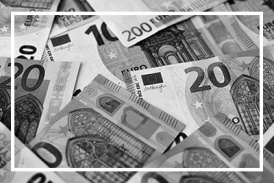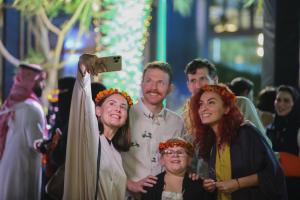Saudi Arabia’s Quality of Life Program Powers Investment Through Vision 2030 Reforms
Quality of Life Program (QoL) is emerging as a central driver of both national well-being and global investment momentum.
RIYADH, SAUDI ARABIA, June 10, 2025 /EINPresswire.com/ -- As Saudi Arabia advances toward its Vision 2030 goals, the Quality of Life Program (QoL) is emerging as a central driver of both national well-being and global investment momentum.
Launched in 2018, the program is one of 11 Vision Realization Programs and is led by CEO Khalid Albaker. It focuses on enhancing livability while positioning sectors such as tourism, culture, and sports as strategic economic assets.
"We don’t view quality of life as an abstract ideal," Albaker said. "It’s a measurable, investment-ready platform that’s already delivering real returns—for our citizens and for our partners around the world."
In 2024, the Kingdom reported a 3.9% increase in non-oil gross domestic product, driven significantly by lifestyle sectors historically seen as non-core. Foreign direct investment surged to $20.69 billion in Q4 2024, underscoring growing global confidence in the Saudi economy.
"We’ve always seen arts, culture, and sports not as luxuries, but as industries. They are engines of economic diversification, talent retention, and global perception," Albaker said.
The Quality of Life Program delivered 173 initiatives in 2024 alone, with 85 percent of its key performance indicators achieved or on track. Notable developments include:
- The number of hotel rooms rising from 280,800 in 2023 to 475,900 in 2024.
- The planting of 1.12 million trees and the establishment of 149 new parks.
- Public space increasing to 6.53 square meters per capita—130% above initial targets.
Tourism growth has been robust, with international visits climbing from 41 million in 2018 to 115.9 million in 2024. The Kingdom is also preparing to host global events including the AFC Asian Cup in 2027, Expo 2030, and the FIFA World Cup in 2034.
"Whether it’s 100 million annual tourists, a 390% increase in Public Investment Fund assets since 2016, or our leap in global happiness rankings, our progress is tangible," said Albaker.
QoL is also contributing to Saudi Arabia’s innovation-based economic shift. Private sector GDP contribution has increased from 40% in 2016 to 47% in 2024. Public-private collaborations are accelerating innovation and unlocking opportunities across creative sectors.
"Our reforms have empowered entrepreneurs, opened new doors for creatives, and created environments where global and local ideas can thrive together," Albaker said.
Saudi Arabia currently ranks first among G20 countries in safety perception and has raised life expectancy to 78.8 years. These achievements reflect wider investments in public health, infrastructure, mobility, and urban livability.
"The real measure of success is when quality of life becomes self-sustaining," Albaker added. "When cities organically support wellness, creativity, and community—that’s when you know you’ve created a thriving ecosystem."
With major international platforms on the horizon, including Expo 2030 and the FIFA World Cup 2034, the Quality of Life Program is positioned to expand its influence. The program will continue to direct investment into sustainable development, cultural infrastructure, and next-generation entertainment technologies.
"We’re building a lifestyle economy at scale," Albaker said. "For investors, this is an invitation not only to witness transformation—but to be a part of it."
Saudi Arabia’s evolving national landscape offers measurable impact, long-term economic vision, and cultural ambition—framing a new regional benchmark for livability and investment potential.
Zayyan Nayel
PlanOne Media
email us here
Legal Disclaimer:
EIN Presswire provides this news content "as is" without warranty of any kind. We do not accept any responsibility or liability for the accuracy, content, images, videos, licenses, completeness, legality, or reliability of the information contained in this article. If you have any complaints or copyright issues related to this article, kindly contact the author above.
Physical Vapor Deposition Market to Reach USD 51.6 billion by 2035 | Fact.MR Report
Eric Malley Launches GTM 23: The Adaptive Growth System™
From Pioneer to Follower: Eric Malley’s Spherical Philosophy™ Exposes Why Apple’s AI Crossroads Signal a New Era
Kalendarium
Więcej ważnych informacji
 Jedynka Newserii
Jedynka Newserii

 Jedynka Newserii
Jedynka Newserii

Prawo

Trwają dyskusje nad kształtem unijnego budżetu na lata 2028–2034. Mogą być rozbieżności w kwestii Funduszu Spójności czy dopłat dla rolników
Trwają prace nad wieloletnimi unijnymi ramami finansowymi (WRF), które określą priorytety wydatków UE na lata 2028–2034. W maju Parlament Europejski przegłosował rezolucję w sprawie swojego stanowiska w tej sprawie. Postulaty europarlamentarzystów mają zostać uwzględnione we wniosku Komisji Europejskiej w sprawie WRF, który zostanie opublikowany w lipcu 2025 roku. Wciąż jednak nie ma zgody miedzy państwami członkowskimi, m.in. w zakresie Funduszu Spójności czy budżetu na rolnictwo.
Konsument
35 proc. gospodarstw domowych nie stać na zakup mieszkania nawet na kredyt. Pomóc może wsparcie budownictwa społecznego i uwolnienie gruntów pod zabudowę

W Polsce co roku oddaje się do użytku ok. 200 tys. mieszkań, co oznacza, że w ciągu dekady teoretycznie potrzeby mieszkaniowe społeczeństwa mogłyby zostać zaspokojone. Jednak większość lokali budują deweloperzy na sprzedaż, a 35 proc. gospodarstw domowych nie stać na zakup nawet za pomocą kredytu. Jednocześnie ta grupa zarabia za dużo, by korzystać z mieszkania socjalnego i komunalnego. Zdaniem prof. Bartłomieja Marony z UEK zmniejszeniu skali problemu zaradzić może wyłącznie większa skala budownictwa społecznego zamiast wspierania kolejnymi programami zaciągania kredytów.
Problemy społeczne
Hejt w sieci dotyka coraz więcej dzieci w wieku szkolnym. Rzadko mówią o tym dorosłym

Coraz większa grupa dzieci zaczyna korzystać z internetu już w wieku siedmiu–ośmiu lat – wynika z raportu NASK „Nastolatki 3.0”. Wtedy też stykają się po raz pierwszy z hejtem, którego jest coraz więcej w mediach społecznościowych. Według raportu NASK ponad 2/3 młodych internautów uważa, że mowa nienawiści jest największym problemem w sieci. Co więcej, dzieci rzadko mówią o takich incydentach dorosłym, dlatego tym istotniejsze są narzędzia technologiczne służące ochronie najmłodszych.
Partner serwisu
Szkolenia

Akademia Newserii
Akademia Newserii to projekt, w ramach którego najlepsi polscy dziennikarze biznesowi, giełdowi oraz lifestylowi, a także szkoleniowcy z wieloletnim doświadczeniem dzielą się swoją wiedzą nt. pracy z mediami.










.gif)

 |
| |
| |
|